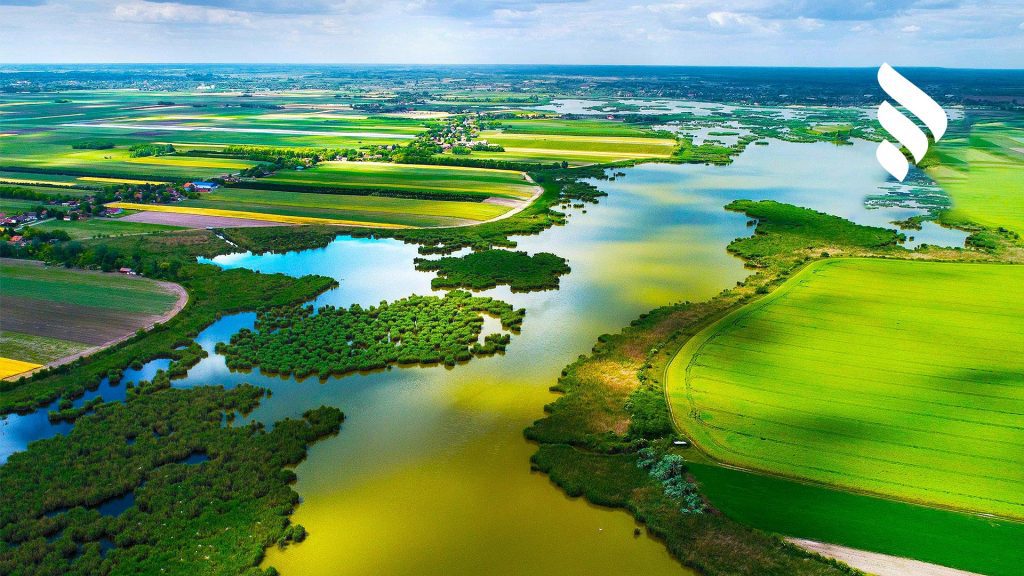Our new series explores the Taskforce on Nature-Related Financial Disclosures (TNFD) framework. In part one, we look at the framework and how it can help financial institutions assess the nature-related risks and opportunities impacting their investments.
At a Glance
- The Taskforce on Nature-Related Financial Disclosures aims to bring about a paradigm shift in the way financial institutions assess and manage nature-related risks and opportunities.
- Financial institutions face a wide range of nature-based risks, including resource dependence, financial impacts, insurance claims, government regulation, and more.
- Nature-based opportunities can help financial institutions build investor and customer confidence, reduce insurance costs, and strengthen supply chains and economies, among other benefits.
The burgeoning field of sustainable finance welcomes a new framework: the Taskforce on Nature-Related Financial Disclosures (TNFD). Inspired by the success of the Taskforce on Climate-Related Financial Disclosures (TCFD), the TNFD aims to transform the way financial institutions (FIs) assess and manage nature-related risks and opportunities.
With more than half – around US$44 trillion – moderately or highly dependent on nature, understanding nature-related risks and opportunities could make a big difference. Shifting to nature-positive actions could unlock up to US$10.1 trillion in annual business value. The TNFD can steer investment towards these opportunities.
Addressing the urgent need for organisations to assess and disclose nature-related risks and opportunities is the core objective of the TNFD framework. Nature-related risks cover a wide range of factors, including biodiversity loss and ecosystem degradation.
These risks are distinct from, but closely related to, climate risk. However, unlike climate risk, the impacts of nature are more localised and complex. FIs need to consider both – natural and climate risks – in their risk management strategies.
Nature-related risks faced by FIs
Financial institutions face a growing number of nature-related risks that can have a significant impact on their portfolios. These risks arise from the complex relationship between businesses and natural ecosystems.
Businesses require a healthy and functioning natural environment for critical resources. Depletion or degradation of these resources, such as water scarcity, deforestation, or declining fisheries, can disrupt supply chains and ultimately the long-term viability of a business. FIs that fail to consider the environmental health of their investees expose themselves to potential financial losses.
There are also financial implications for FIs that lack transparency on nature-related risks, as they may miss out on opportunities and face reduced investor interest. With growing investor demand for sustainable investment options, these non-financial disclosures play a critical role in investment decisions.
Failure to manage these nature-based risks, such as extreme weather events and biodiversity loss, means higher insurance premiums for companies due to potentially higher claims. FIs that fail to consider these nature-related risks in their portfolios may be exposed to significant financial losses when such events occur.
Companies that put their environmental responsibilities on the back burner risk consumer backlash. As a result, their brand reputation and market share will suffer. It is therefore important for FIs to consider how their investments may be viewed in this context. Ultimately, negative public perception leads to a loss of trust, which affects client relationships and, in the worst case, attracts regulatory scrutiny.

Can AI in ESG close the gap in data management?

Does CSR still matter in the ESG era?
Ready for a change in your organisation?
Where there are risks, there are opportunities
While nature-related risks present challenges for FIs, they also offer opportunities. By integrating nature into their investment and lending strategies, FIs can generate benefits for themselves, their clients, and the environment.
By prioritising investments in companies with minimal impact on nature, FIs can build trust with investors and clients. In addition, FIs can reduce their exposure to environmental risks. This translates into lower insurance premiums, leading to cost savings and a more stable financial position.
Nature-based financial assessments often lead to investments in projects that benefit local communities and society as a whole. This can include sustainable agriculture, renewable energy initiatives, and nature-based tourism ventures that create employment opportunities and stimulate economic growth.
One of the key concerns for FIs is regulatory compliance. With governments around the world emphasising sustainability, including the environmental aspect, FIs appear to be integrating nature-based assessments to position themselves favourably with regulators. This compliance mitigates legal and reputational risks.
Nature-based finance shifts the focus from short-term profits to long-term value creation for FIs. By investing in sustainable practices, FIs can build resilience to economic and market volatility.
Getting started with TNFD nature-related corporate reporting
As of January 2024, 320 organisations from more than 46 countries have committed to start using nature-related disclosures based on the TNFD Recommendations published last September.
With so many organisations signalling their intention to start using the TNFD Recommendations, including more than 100 FIs, are you planning to jump on the bandwagon soon?
For FIs that are actively preparing to navigate the complexities of nature-related financial disclosures, our team of experts at RenoirESG can help by tailoring solutions to address your organisation’s unique challenges.
To learn more about our services, please visit this page.
Did you find this article useful? Stay tuned for the next part of this series where we will discuss the impact of the TNFD on financial institutions and the initiatives/actions that financial institutions should take to prepare for the TNFD.
Are you interested in minimising nature-related risks and maximising opportunities in your financial institution?













